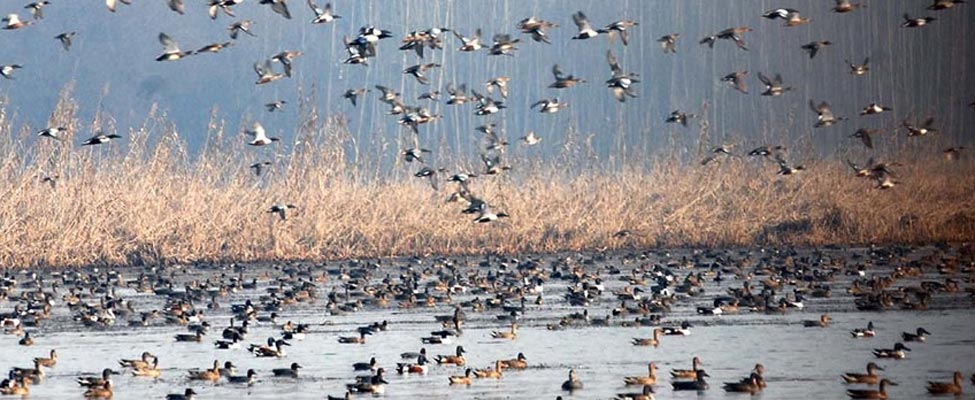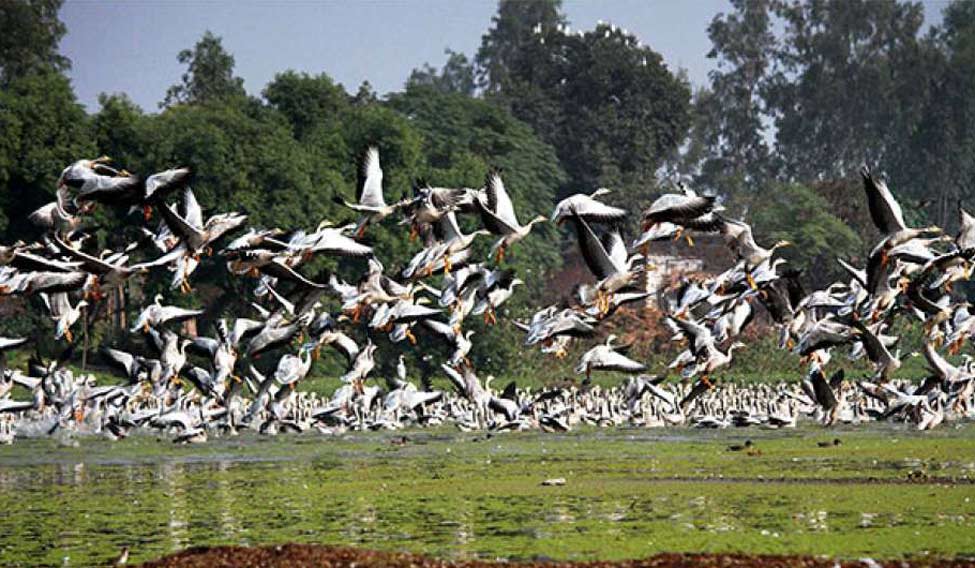The gloomy winter landscape of the Kashmir Valley has come alive with the arrival of three lakh winged visitors from as far as Central Asia and Europe after arduous efforts by the wildlife department to restore their natural habitat.
Tufted Duck, Gadwall, Brahminy Duck, Garganey, Greylag Goose, Mallard, Common Merganser, Northern Pintail, Common Pochard, Ferruginous Pochard, Red-Crested Pochard, Ruddy Shelduck, Northern Shoveler, Common Teal, and Eurasian Wigeon are some of the most sighted birds in the wetlands of Kashmir.
The winged visitors start arriving in the valley towards the first week of November as Kashmir presents them a comparatively hospitable alternate habitat compared to the extreme freezing conditions in their natural habitats in Siberia, China, Japan and other countries in northern hemisphere, a wildlife department official said.
"We have recorded around three lakh bird arrivals in the wetlands of Kashmir so far. This is very good number as the concentration of migratory birds will peak around first week of February," wildlife warden (wetlands) Roauf Zargar said.
More birds are likely to arrive in the next 45 days as the temperature is expected to drop further in some of the places where these birds come from.
The birds—which feed on insects, worms and fish in the water bodies—present a beautiful picture, changing the colour of the valley's landscape.
The wildlife department took a series of steps to restore the natural habitat of these birds which were threatened by encroachments, unscientific waste disposal and noise pollution interfering with the ecosystem of the wetlands.
"We have completed works at Hokersar wetlands while Hygam and Shallabug will be completed in 10 to 15 days," Zargar said.
The floods in Kashmir in 2014 had threatened the winter escapade of migratory birds as the September deluge that year brought with it a layer of oil which settled over the water in the Hokersar wetland, causing enormous damage to the ecosystem of the wetland.
 The birds present a beautiful picture, changing the colour of the valley's landscape | via J&K Tourism
The birds present a beautiful picture, changing the colour of the valley's landscape | via J&K Tourism
The wildlife staff had to drain out the water with oily layer before letting in fresh streams of water to ensure that the visiting birds do not face any difficulty in finding food.
Noise pollution caused by rapid urbanisation around the wetlands, however, continues to be a an irritant as it is putting off the visiting birds.
"Noise of all kinds causes disturbance to the birds. This can lead to the birds finding alternate places to spend the winters in," Zargar said.
To tackle the more obvious threat of poaching, the department has set up squads to maintain vigil around the wetlands of Kashmir.
"We have so far recovered four guns from Wullar area. We have also set up teams to keep an eye on any poaching attempts not only within the wetlands but even in the areas surrounding them," Zargar added.
The birds start their long-distance flight from various places like Siberia, China and Japan in October in view of freezing temperatures, which makes food scarce for them in their natural summer habitats.
Besides Hokersar, the migratory birds flock the Wullar lake and other wetlands like Hygam, Shallabugh and Mirgund, in surrounding areas, bringing cheer to bird watchers of the valley.
—PTI






